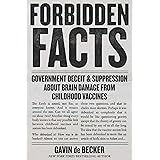Unlocking the Secret Techniques Writers Use to Make Fiction Feel Unbelievably Real

THE RECKLESS WRITER
We should never forget that our dreams are as real as our memories
There are two extremely clever lines in the 1999 film The Matrix. One is when a cat walks by twice and Neo calls it deja vu. The second is when the character Mouse mentions that maybe the reason so many animals taste like chicken is because the malevolent artificial intelligence that controls their lives doesn’t understand flavor.
The reason I like these moments is because they represent commonplace oddities. Everybody has experienced deja vu. Everybody has been told that certain animals “taste like chicken.” So, when these two examples are explained as “a glitch in the matrix,” we smile rather than protest.
That’s how you convince the members of your audience to suspend their disbelief.
The better you are at encouraging the suspension of disbelief, the more effective your writing becomes. If you learn to use tactics that go beyond the text itself, you might even gain the power to blur the lines between fiction and reality.
Modern mythology
I grew up in the era of Star Wars. The original film had a run time of two hours and one minute but the characters from the film are as prominent in my memories as my siblings, parents, teachers, and friends.
The mythology of that movie inspired my dreams, my drawings, and my play. On most afternoons I’d wander through the woods looking for a magical portal that might take me to a galaxy far, far away. It was only many years later that I realized I’d succeeded.
When you imagine a world every single day, it becomes your reality.
But it wasn’t just my efforts. I received more than one gentle nudge from the film’s creative team. We were reminded of Star Wars in the clothing we wore, the lunchboxes we carried, the toys at the store, and the games at the arcade.
Star Wars wasn’t just on the silver screen, it was very much in our day-to-day, tangible world.



















